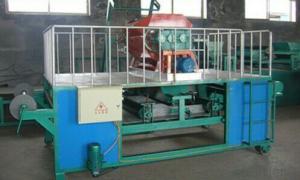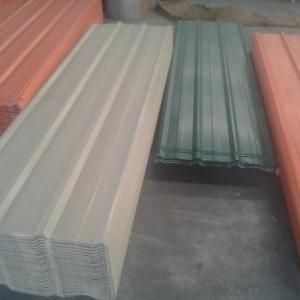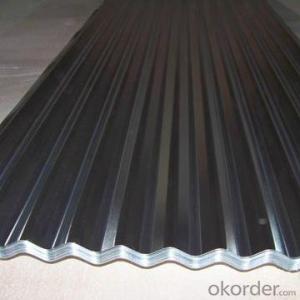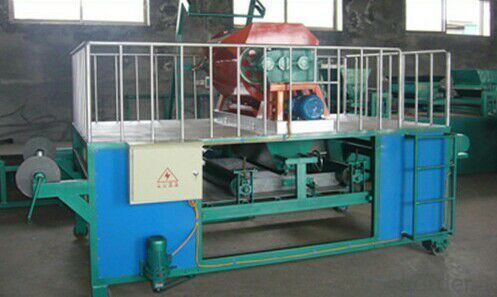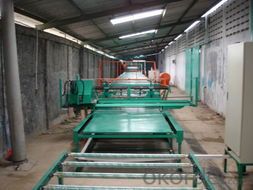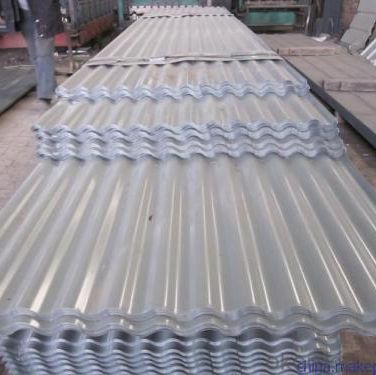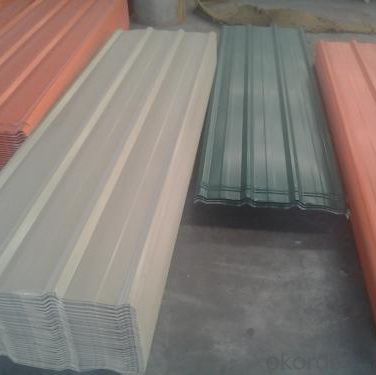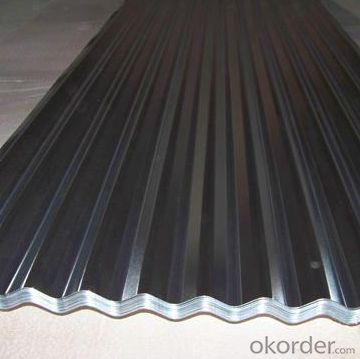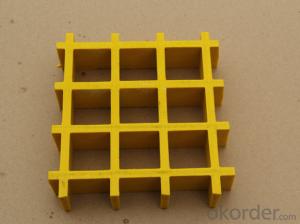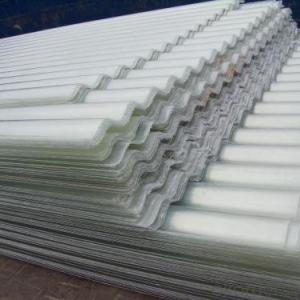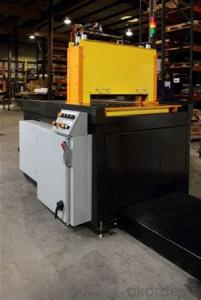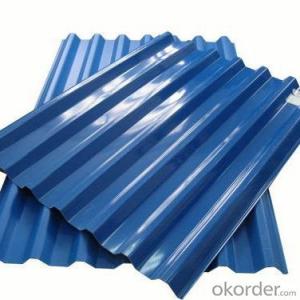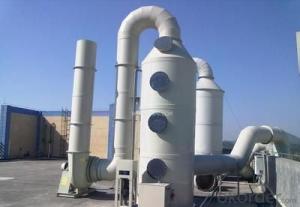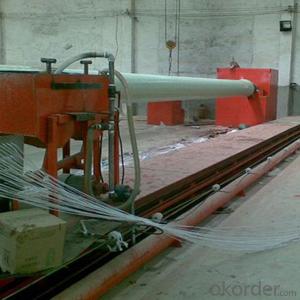FRP Pultrusion Profiles:Anti-Corrosion, Anti-Rust, High-Quality FRP Pultruded Grating
- Loading Port:
- Tianjin
- Payment Terms:
- TT OR LC
- Min Order Qty:
- 20000 m.t.
- Supply Capability:
- 300000 m.t./month
OKorder Service Pledge
OKorder Financial Service
You Might Also Like
Specification
PRODUCT DESCRIPTION
Pultruded grating is made by a particular assembly process, which using “I” shape as its main load-bearing and special rod to go through the bearing bar. Pultruded grating include the standard grating and the custom grating, the custom grating can be designed to meet customer’s requirement or special using condition by changing the shape, size and space of the bearing bars, the surface can be covered with lozenge panel, grit panel, or added the anti-slippery sand directly.
FRP pultruded grating has the most characteristics of molded grating, but it has its distinct advantages, it has very high fiberglass content in the loading direction, so it has very high load capability, it has more superiority when used at wide span, so that the basic support will be decreased and the project cost will be reduced accordingly.
SPECIFICATION
The standard space between two crossbars is 6 inch or 12 inch.
Thickness (mm) | Bar width (mm) | Open space (mm) | Open rate (%) | Approx weight (kg/m |
25.4 | 15.2 | 22.8 | 60 | 13.2 |
25.4 | 15.2 | 15.2 | 50 | 15.9 |
25.4 | 15.2 | 10.1 | 40 | 18.5 |
25.4 | 40 | 10.8 | 21 | 14.5 |
38.1 | 15.2 | 22.8 | 60 | 15.8 |
38.1 | 15.2 | 15.2 | 50 | 19.1 |
38.1 | 15.2 | 10.1 | 40 | 22.4 |
50.8 | 25.4 | 25.4 | 50 | 16.6 |
50.8 | 25.4 | 12.7 | 33 | 21.1 |
CHOICE FOR PULTRUDED GRATING
Resin: GP resin, ISO resin, VE resin, Phenol resin
Color choice: Yellow, gray, green, custom color
Surface choice: Groove surface, grit surface, lozenge cover surface
FEATURES
a. Anti-corrosion and anti-rust
b. Light weight and high strength
c. Anti-flammable
d. Anti- fatigue
e. Safe and anti-slippery
f. Anti-ageing
g. Easy of maintenance
h. Excellent electromagnetism property
i. Good economic benefit
FIELDS SERVED
Sewage treatment,
water supply and drainage,
chemical industry,
oil industry,
power engineering,
pulp and paper,
construction engineering,
spinning, marine engineering.
APPLICATION
Operation terrace,
stair walkway,
ground floor,
trench cover,
sidewalk,
foot bridge,
equipment safety fence,
scaffold.
COMPANT DESCRIPTION
CNBM,China National Building Materials Group is a state-owned enterprise in charge of administrative affairs in china building materials industry. Established in 1984, CNBM is a large group corporation of building materials with total assets of 25 billion RMB and a total staff of 30,000.CNBM now owns 200 subordinating firms of solely owned and joint-venture companies.
CNBM International Corporation is one subsidiary of CNBM, we focus on offering good-quality products,professional service and complete solution to our customers. Strong delivery capacity, advanced technology& management, strong financing capability and excellent after-sale service are our advantages in sharing international market.
FAQ
Q1.What's your sample policy?
A:We can supply the sample if we have ready parts in stock, but the customers have to pay the courier cost.
Q2.Can you produce according to the samples?
A: Yes, we can produce or modify the products according to your request.
Q3.How do you deliver the goods to my country?
A:We can provide international express, such as DHL, EMS, UPS, FedEx, etc. We select air freight and sea freight upon your requests. Quotations if without mentioning the shipping costs are shipping fee excluded.
Q4.How much does it cost to ship to my country?
A:When you goanna to place an order, please contact us, because different country has different freight.
Q5.How to get the catalogue?
A:please contact us and tell us what you are looking for.
We will try our best to meet customers' demands. Welcome you come here to visit us. We sincerely welcome partners around the world to establish business cooperation with us on the basis of mutual trust, benefit and development.
PICTURES
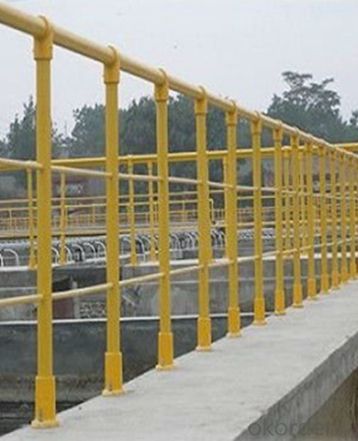
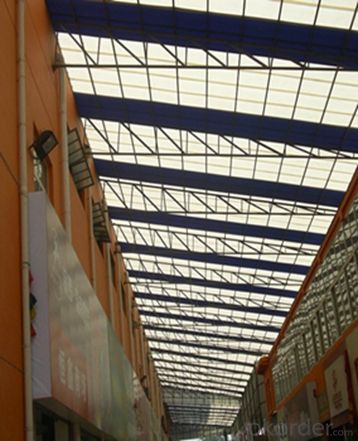
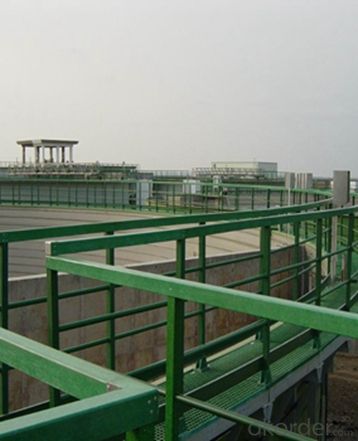
- Q: How do FRP pultrusion profiles perform in high-temperature applications?
- FRP (Fiber Reinforced Polymer) pultrusion profiles are known for their excellent performance in high-temperature applications. The combination of the reinforcement fibers and the polymer matrix used in the pultrusion process results in a material that exhibits superior thermal stability and resistance. One of the key advantages of FRP pultrusion profiles in high-temperature applications is their ability to withstand elevated temperatures without losing structural integrity. Unlike traditional materials like steel or aluminum, which may experience deformation or failure under high temperatures, FRP pultrusion profiles maintain their shape and performance. The specific performance of FRP pultrusion profiles in high-temperature applications depends on the choice of reinforcement fibers and the polymer matrix used. Different fibers, such as glass, carbon, or aramid, have varying thermal resistance properties. By selecting the appropriate fiber type and resin system, manufacturers can tailor the FRP pultrusion profiles to withstand specific temperature ranges. FRP pultrusion profiles are also known for their low thermal conductivity, which means they do not conduct heat as efficiently as metals. This property makes them suitable for insulation applications, as they can help minimize heat transfer and maintain a stable temperature environment. Moreover, FRP pultrusion profiles are resistant to corrosion, which is particularly advantageous in high-temperature environments where metals can corrode more rapidly. Their corrosion resistance ensures long-term durability and reduces maintenance requirements. In summary, FRP pultrusion profiles excel in high-temperature applications due to their structural integrity, thermal stability, low thermal conductivity, and corrosion resistance. Manufacturers can customize the material composition to meet specific temperature requirements, making FRP pultrusion profiles a reliable choice for a range of industries, including aerospace, automotive, chemical processing, and oil and gas.
- Q: Are FRP pultrusion profiles UV-resistant?
- Yes, FRP pultrusion profiles are UV-resistant. The fiberglass reinforcement in the profiles provides excellent resistance to UV radiation, making them suitable for outdoor applications where exposure to sunlight is a concern.
- Q: Can FRP pultrusion profiles be used in agricultural applications?
- Yes, FRP pultrusion profiles can be used in agricultural applications. FRP (Fiber Reinforced Polymer) pultrusion profiles are known for their high strength-to-weight ratio, corrosion resistance, and durability, making them suitable for various agricultural applications. One common use of FRP pultrusion profiles in agriculture is in the construction of livestock enclosures such as fences, gates, and pens. These profiles offer excellent resistance to weathering, chemicals, and UV degradation, ensuring long-lasting performance in outdoor environments. Additionally, their lightweight nature makes them easy to handle and install. FRP pultrusion profiles are also used in the manufacturing of agricultural equipment and machinery. They can be utilized for structural components, such as beams and supports, as well as for functional parts like handles, brackets, and covers. The high strength of FRP profiles allows them to withstand heavy loads and harsh operating conditions, while their corrosion resistance ensures longevity in corrosive environments such as fertilizer storage areas or livestock waste management systems. Furthermore, FRP pultrusion profiles can be used for irrigation systems in agriculture. Their non-conductive nature makes them ideal for applications where electrical insulation is required, such as in the construction of irrigation pipes or channels. Additionally, the corrosion resistance of FRP profiles ensures that they can withstand exposure to water, chemicals, and fertilizers commonly used in agricultural irrigation. In summary, FRP pultrusion profiles are well-suited for agricultural applications due to their high strength, corrosion resistance, and durability. Whether it is for livestock enclosures, agricultural machinery, or irrigation systems, FRP profiles offer several advantages that make them a reliable choice in the agricultural industry.
- Q: Can FRP pultrusion profiles be used in telecommunications applications?
- Yes, FRP (Fiber Reinforced Polymer) pultrusion profiles can be used in telecommunications applications. FRP pultrusion profiles offer several advantages that make them suitable for telecommunications infrastructure. Firstly, FRP pultrusion profiles are lightweight yet strong, which makes them ideal for applications such as antenna supports, cable trays, and equipment racks. Their high strength-to-weight ratio allows for easier installation and transportation, while still providing the necessary structural support. Secondly, FRP pultrusion profiles are corrosion resistant, which is a crucial characteristic in telecommunication applications. Telecommunications infrastructure is often exposed to harsh environments, including moisture, chemicals, and extreme temperatures. Unlike traditional materials like steel or wood, FRP does not corrode or degrade in these conditions, ensuring long-term durability and reliability. Additionally, FRP pultrusion profiles offer electrical insulation properties, which is vital in telecommunications applications. They do not conduct electricity, making them safe for use in areas where electrical equipment is installed. This feature helps prevent electrical interference and ensures the integrity of the telecommunication system. Furthermore, FRP pultrusion profiles can be customized to meet specific design requirements. They can be manufactured in various shapes and sizes, allowing for flexibility in designing telecommunication infrastructure. This versatility makes FRP pultrusion profiles suitable for a wide range of applications within the telecommunications industry. In conclusion, FRP pultrusion profiles are well-suited for telecommunications applications due to their lightweight yet strong nature, corrosion resistance, electrical insulation properties, and customization possibilities. These attributes make them a reliable choice for supporting and protecting telecommunication infrastructure.
- Q: What is the dimensional stability of FRP pultrusion profiles?
- The dimensional stability of FRP (Fiber Reinforced Polymer) pultrusion profiles is generally high. FRP materials have a low coefficient of thermal expansion, meaning they do not significantly expand or contract with changes in temperature. This property allows FRP pultrusion profiles to maintain their shape and dimensions over a wide range of environmental conditions, making them suitable for applications where dimensional stability is important.
- Q: Are FRP pultrusion profiles resistant to high-pressure water jets?
- FRP pultrusion profiles have a general resistance to high-pressure water jets. Their high strength-to-weight ratio, corrosion resistance, and durability make them suitable for applications involving water and harsh environments. The pultrusion manufacturing process ensures thorough resin impregnation of the fibers, resulting in a dense composite material. This density provides high resistance to water penetration, protecting the material from damage by high-pressure water jets. Additionally, FRP pultrusion profiles exhibit excellent chemical resistance, including resistance to water. This ensures that the profiles will not degrade when exposed to high-pressure water jets for extended periods. It is important to note that the specific resistance of FRP pultrusion profiles to high-pressure water jets may vary depending on the resin and fiber combination used. To obtain detailed information about the resistance of specific profiles in a given application, it is recommended to consult the manufacturer or supplier.
- Q: Can FRP pultrusion profiles be used in the aerospace and aviation industry?
- Yes, FRP pultrusion profiles can be used in the aerospace and aviation industry. These profiles offer several advantages such as high strength-to-weight ratio, excellent corrosion resistance, and electrical insulation properties. They can be used in various applications including aircraft interiors, structural components, and electrical systems. Additionally, FRP pultrusion profiles can be customized to meet specific design requirements, making them suitable for use in the aerospace and aviation industry.
- Q: Are FRP pultrusion profiles resistant to caustic soda?
- Yes, FRP pultrusion profiles are generally resistant to caustic soda. The corrosion-resistant properties of FRP make it suitable for use in environments that involve caustic soda or other aggressive chemicals. However, it is always recommended to evaluate the specific conditions and concentration of the caustic soda to ensure the compatibility of FRP profiles.
- Q: Can FRP pultrusion profiles be used in mining applications?
- Mining applications can utilize FRP pultrusion profiles, which are known for their high strength-to-weight ratio, durability, and corrosion resistance. These profiles are suitable for a range of purposes in mining operations. They can provide structural support in underground mines, including the construction of tunnels, shafts, and mine roofs. Their strength allows them to handle heavy loads and provide long-term support. Additionally, FRP pultrusion profiles can support equipment and machinery like conveyor systems, pumps, and tanks. Their corrosion resistance makes them ideal for use in harsh mining environments that involve exposure to moisture, chemicals, and abrasive materials. Moreover, FRP pultrusion profiles can be used for safety applications in mining, such as handrails, walkways, and grating systems. These profiles offer reliable and non-slip surfaces, ensuring the safety of mining workers. In summary, FRP pultrusion profiles bring several advantages to mining applications, including high strength, corrosion resistance, durability, and easy installation. These qualities make them a cost-effective and viable option for various mining operations, enhancing efficiency and safety in the industry.
- Q: Can FRP pultrusion profiles be used in the construction of safety barriers?
- Yes, FRP pultrusion profiles can be used in the construction of safety barriers. FRP (Fiber Reinforced Polymer) pultrusion profiles offer high strength-to-weight ratio, corrosion resistance, and durability, making them suitable for safety barrier applications. They can withstand harsh environmental conditions and provide excellent impact resistance, making them an ideal choice for ensuring safety in various industries such as construction, transportation, and infrastructure.
Send your message to us
FRP Pultrusion Profiles:Anti-Corrosion, Anti-Rust, High-Quality FRP Pultruded Grating
- Loading Port:
- Tianjin
- Payment Terms:
- TT OR LC
- Min Order Qty:
- 20000 m.t.
- Supply Capability:
- 300000 m.t./month
OKorder Service Pledge
OKorder Financial Service
Similar products
Hot products
Hot Searches
Related keywords
